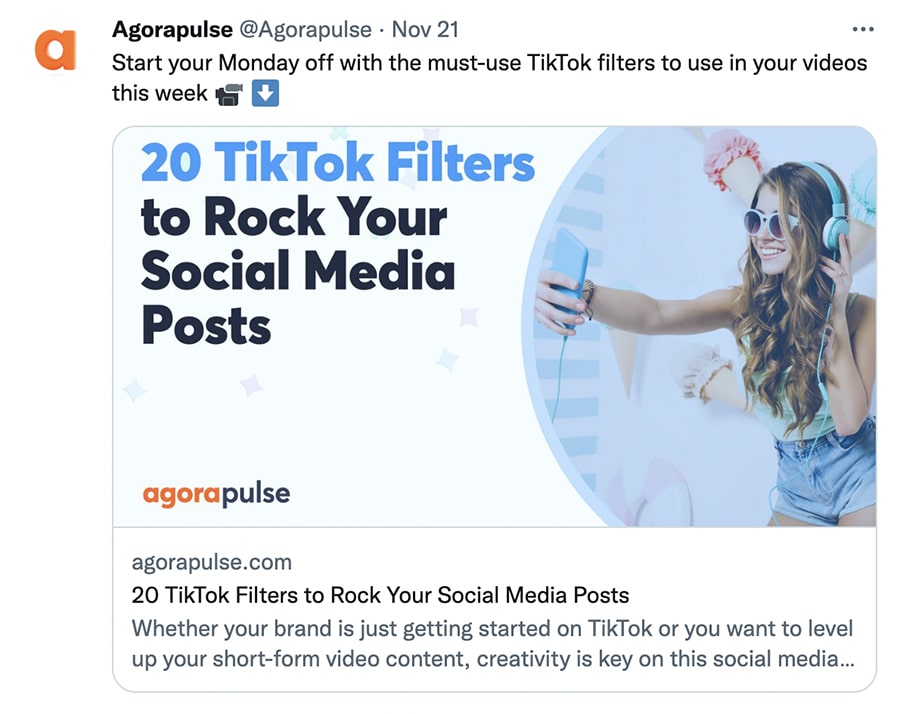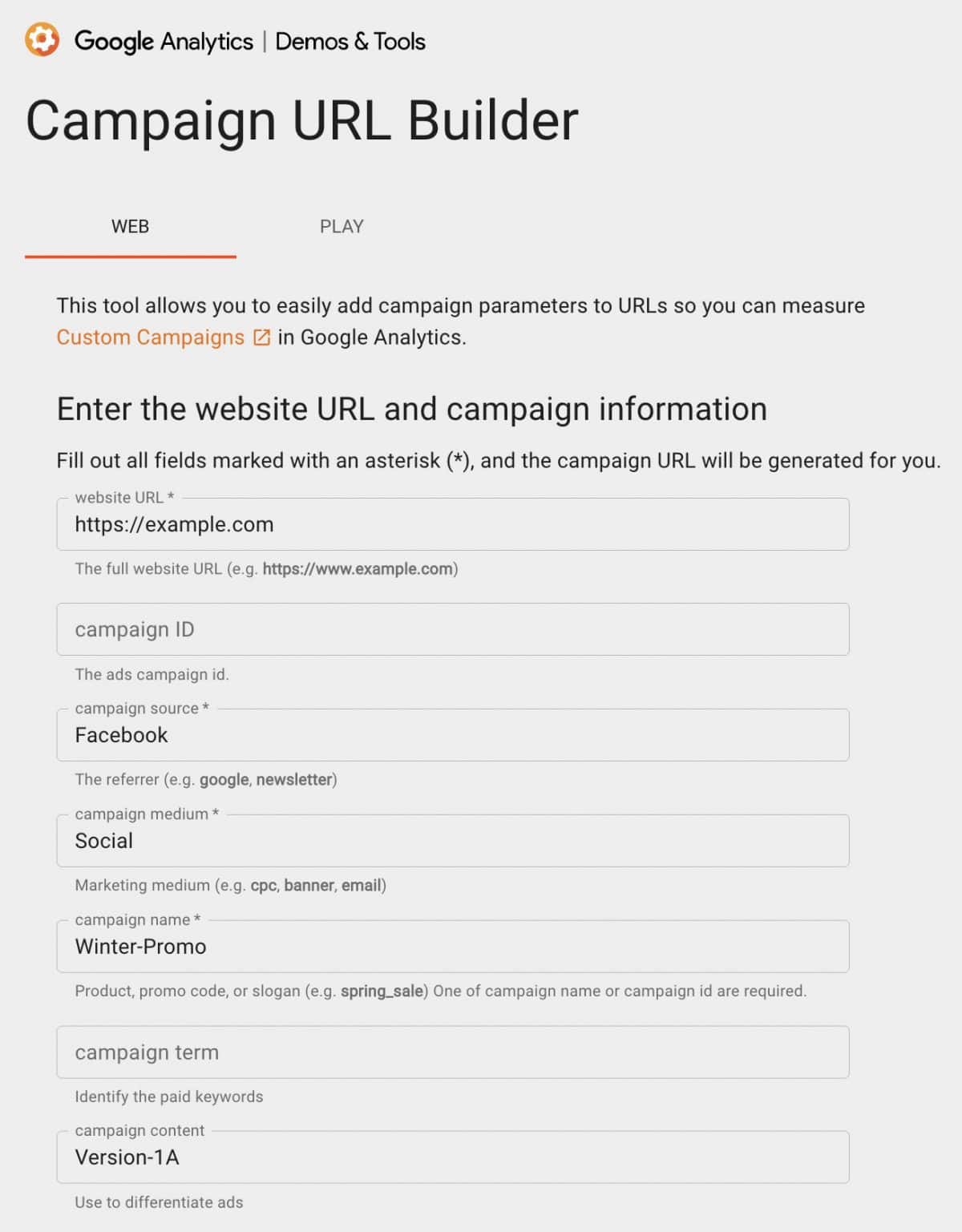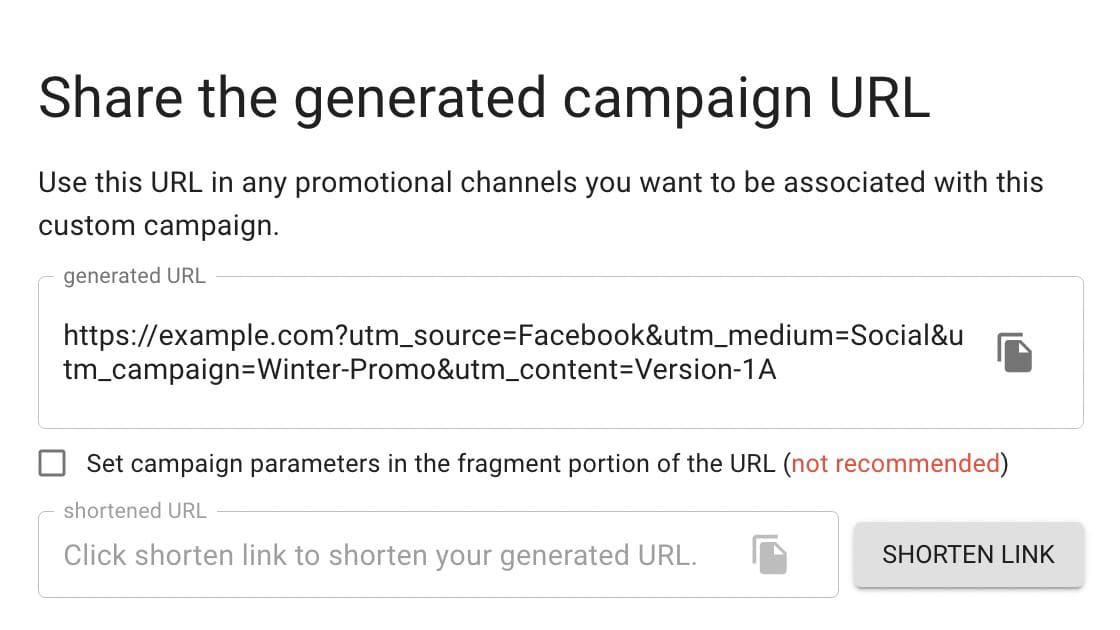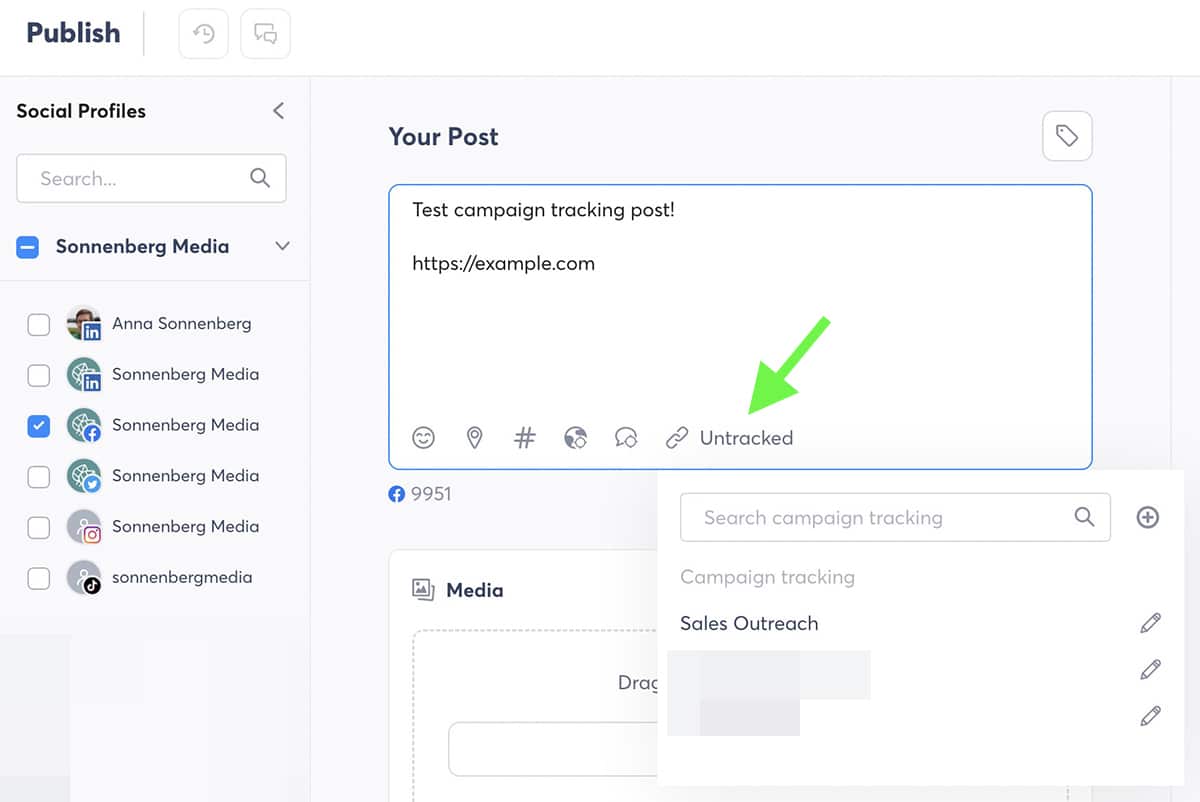UTMs—or urchin tracking modules—might sound intimidating. But those bits of code are essential for measuring and analyzing activity from your marketing efforts and proving your social media ROI.
Even better, UTM codes are easier to use than you might think, as long as you have the right tools in your kit. Get started on building, tracking, and analyzing UTMs with the guide below.
UTM Parameters 101: What Are UTMs?
UTMs are tags or strings of code that appear at the end of a website link. They’re located after the part of the URL that specifies the address of the webpage.
Because UTMs aren’t part of the URL itself, they don’t affect the destination (i.e., the webpage) in the slightest. A URL with one UTM code points to the exact same page as a URL with a different UTM code.
So what do UTMs actually do? Think of them as tracking devices. They tell you where people clicked to access your digital content.
Here’s an example:
I landed on the URL above by clicking on the Agorapulse tweet below. The main URL for this article about TikTok filters is relatively short: agorapulse.com/blog/tiktok-filters/.
The UTM code starts after the “?” that appears at the end of the URL. In this example, Agorapulse configured the UTM parameters to include information about everything from the social media platform to the piece of content I clicked.
These added tags don’t affect my experience of engaging with the tweet or reading the blog post. But they do help Agorapulse track and analyze marketing efforts—and they can help your business do the same.
Why Are UTMs Important?
In short, UTMs are important for tracking online activity.
You might be thinking: I already use social media analytics to count clicks and website analytics to monitor conversions. Do I really need another tracking tool?
As helpful as social media and website analytics can be, you’ve probably noticed that there’s a disconnect between the two:
- Social media analytics show the number of times people clicked on a single post or on all content from a profile or channel.
- Website analytics show the number of clicks from social media or from certain channels as well as any resulting activity—such as clicks, conversions, and revenue.
When you use these two types of analytics separately, you miss a lot of information. UTM codes essentially link marketing and website analytics together to give you a complete picture of how clicks on social media content lead to results on your website.
How does that work in practice?
Let’s look more closely at some key benefits of UTM parameters. If you want to try it for yourself, get a free trial of Agorapulse and see how.
Pinpoint top-performing campaigns and content
Does your organization typically share the same links and landing pages across multiple social posts and profiles? You can create UTM codes that record both the broader marketing campaign and the specific social post for every click.
When you review UTM analytics, you can easily pinpoint the campaigns and content that led to the most clicks, conversions, and even revenue. With these insights, you can report to stakeholders more efficiently—without guessing or wasting time parsing results.
Measure the value of cross-channel marketing efforts
As a social media manager, your efforts may focus solely on Facebook, Twitter, and other social platforms. But your colleagues may manage complementary channels like email and content marketing or paid efforts on social media and search engines.
With UTM parameters, you can seamlessly track campaign results from each channel. Then you can compare results from each channel and determine which ones provide the greatest value to your organization.
Identify high-performing influencers
Does your team frequently partner with influencers to promote content and campaigns? To track results from these partnerships, you may have experimented with creating unique landing pages or promo codes for each influencer.
With UTMs, you have an easier option. Rather than building separate pages or relying on promo codes (which only track conversions), provide each influencer with a URL that includes a unique UTM code. Then you can simplify your efforts and monitor a wider range of results—rather than conversions alone.
Improve marketing campaign performance
On the surface, UTM parameters are ideal for tracking online activity related to digital marketing efforts. But they let you do much more than access and process data. You can use the insights you gain from UTMs to improve marketing campaign performance.
For example, you may find that LinkedIn generates far and away the most traffic and conversions related to a certain campaign. When you run similar campaigns in the future, you can consider focusing more of your resources and budget on this channel rather than experimenting with every channel.
UTM analytics can also give you a deeper look into what works for your brand and for your audience. For example, you may find that certain Facebook posts generate significantly more website traffic, which results in substantial revenue. You can analyze those posts and repurpose the messaging, creatives, and calls-to-action (CTAs) for future content.
How to Create UTM Parameters
Before you can create UTMs, you need to know the basic components. Each UTM can include as many as five parameters:
- Source, which reflects the site or advertising platform—like “Facebook”
- Medium, which reflects the type of marketing channel—like “Social”
- Campaign, which reflects the campaign name—like “eCommerce Summit”
- Term, which reflects the paid search keyword—like “Agorapulse”
- Content, which reflects the individual post—like “Version A”
Does that sound like way too much information? Don’t worry: You don’t necessarily have to include all five components in each UTM code. In some cases, only a few will apply. But when you want to collect as much data as possible, you’ve got plenty of options.
Google Analytics Campaign URL Builder
If you plan to use UTM codes across marketing channels, the Google Analytics Campaign URL Builder is a great option. You can use it to create codes for social media, email marketing, and other channels.
To create a UTM code using the Google Analytics tool, start by entering the URL where you want to drive traffic. For example, enter the URL for a blog post, landing page, or e-commerce destination.
Then enter the three parameters that this tool requires: source, medium, and campaign. For organic social media posts, you can also add a content parameter. Note that the term parameter doesn’t apply to organic content since it’s designed for paid keywords.
Then scroll down to see the URL that the tool automatically generated using your parameters. As you can see, the tool automatically adds all the necessary tags—like “utm_source=Facebook” and “utm_medium=Social.” It also places the tags in order and adds necessary characters at the end of the URL—like placing a “&” in between each tag.
You can click to copy and paste the URL directly into your social media posts. Google Analytics also gives you the option to shorten long, unwieldy codes if you prefer. Note that you need an account with a third-party tool like bit.ly to use the link shortening tool.
Agorapulse Campaign Tracker
If you want to track UTMs across social media and you rely on Agorapulse to publish marketing content, using the dashboard’s built-in UTM tracking tool is a smart choice. To access it, open the post composer and enter a URL in the caption.
Then click the Untracked button at the bottom of the caption. Click the plus sign to set up new campaign tracking. For the source, Agorapulse automatically selects the social network. When someone clicks the URL on the published post, the UTM tracking will automatically display the name of the social network—such as Facebook.
Agorapulse also selects social as the medium. However, you can opt to switch these two defaults around or use custom parameters instead. For the campaign, enter your own custom text to describe your campaign or other efforts. Keep it short and use the underscore symbol to replace any spaces.
You won’t see an option to enter a content parameter in Agorapulse’s campaign tracking tool. That’s because the dashboard automatically generates a content identifier to simplify tracking.
Once you set up a tracking template, you’ll see a “Tracked” confirmation in the post composer. You can click it to change the setup or to choose another tracking option. Agorapulse automatically saves your tracking campaigns so you can reuse them.
Note that Agorapulse automatically shortens tracked URLs with pulse.ly. You can opt to use bit.ly instead, but you’ll need to set up an account and click to link it to Agorapulse.
Google Analytics
Technically, you don’t need one of the UTM tools above to create and apply tags to URLs. You always have the option to generate UTMs manually and then copy and paste them into your marketing content. However, a UTM tool can save you time and help you avoid errors that would render your data useless.
But you do need an analytics tool that you can use to monitor traffic and other activity on your website. Google Analytics is an easy choice because it’s free to use, offers robust measurements, and integrates with solutions like Agorapulse.
Grab your FREE trial of Agorapulse right now!
How to Use UTM Codes
After creating UTM parameters with the tools above, using them is easy. If you use Agorapulse campaign tracking, all you have to do is publish the post you drafted in the dashboard. If you opted for the Google URL builder, paste the URL you copied into the Agorapulse post composer and publish it.
For example, I clicked on the Agorapulse tweet above and landed at the URL below. The UTM parameters show the source of my click (Twitter), the medium (social), the custom campaign name (ecommercesummit), and an auto-generated content ID.
As you can see, the URL doesn’t appear at all in the tweet—and you certainly can’t see the UTM parameters before you click the Twitter card. They don’t impact the user experience, but they do make the measurement process much easier.
How to Monitor UTM Tracking Codes
After publishing marketing content with UTM codes, you can start tracking the results. With a combination of Google Analytics and Agorapulse, you can get all the insights you need to measure campaigns and make smarter decisions.
Measure UTMs with Google Analytics
You can use either Google Analytics Universal (through June 2023) or Google Analytics 4 to track UTMs and measure results. Start by opening your Google Analytics account and looking for campaign-related acquisition metrics.
In Universal Analytics, you can find this data by opening the acquisition menu and selecting the campaigns panel. Here, you’ll see a list of all the tracked campaigns that have attracted visitors to your website.
By default, this chart only lists campaigns. To add more nuance, open the secondary dimension dropdown menu to select another parameter. For example, you can track source, medium, or both. Now you can see which campaign and which social channel delivered the best results.
You can access similar data in GA4 by going to the acquisition menu and opening the traffic acquisition panel. Then change the default view from channel group to campaign so you can dive into UTM tracking data.
Note that Google Analytics can track e-commerce revenue, sales transactions, and a range of other conversions. Take some time to configure Google Analytics goals to add even more value to your UTM tracking data.
Track UTMs with Agorapulse
If you need to measure results across multiple marketing channels, Google Analytics is a great place to start. But if you want to focus on results from social media marketing efforts, Agorapulse makes measurement much easier.
To get started, connect your Google Analytics account with Agorapulse. Then open the social media ROI reporting panel and start digging into the data.
Monitor social analytics
Once you connect Google Analytics, your Agorapulse dashboard automatically tracks website activity that originates on social media—even if you didn’t set up campaign tracking.
The social analytics tab reveals the total visitors, transactions, and revenue your site generated as a result of social media content. You can use the daily breakdowns to identify peaks in activity and look for patterns.
Agorapulse also breaks down this data by campaign, landing page, and social media channel. With this data, it’s incredibly easy to see what’s creating value for your brand or clients—and use your findings to improve digital marketing ROI. Note that if you don’t set up campaign tracking, you’ll see “(not set)” in the campaign column.
Analyze marketing funnels
If you’ve set up goals in Google Analytics, you can select them from the dropdown menu in your Agorapulse dashboard. You can compare results from goal to goal to determine when people dropped out of your funnel. Then you can use your findings to improve future campaigns.
Measure return on investment (ROI)
If you’ve been using Agorapulse’s campaign tracking tools, you can get much more detailed data on the Your Social ROI tab. In addition to visitor, transaction, and revenue reports, this tab breaks down data by profile and content type. With these insights, you can pinpoint the exact profile and content type (i.e., posts) that drives the most value.
You can also use this report to find the specific pieces of content that have generated the most value. If you’ve been posting across channels or testing different copy and creatives, this report is especially helpful.
Curious which team member brings the most value to your social team? This report also attributes visitors, transactions, and revenue to the team member who published the tracked post.
In other words, you can use these reports to prove social media ROI to your team, stakeholders or clients. Want to share this data? Click the Export button in the upper right corner to download and share the report.
Best Practices for Using and Organizing UTMs
As you can see, creating and using UTM codes isn’t difficult. But when you want to maximize the value you get from your efforts, it’s helpful to follow some best practices. Here are a few guidelines to keep in mind:
- Be consistent with UTM structures and campaign naming. Keep a list of campaign names in a shared spreadsheet so your team can easily reference and reuse them.
- Create tracking templates to speed up the process. In Agorapulse’s campaign tracker, you can opt to apply defaults for all UTM codes.
- Choose campaign names that are suitable for the public. Even though UTMs don’t always display in social media posts, anyone can see them in the address bar.
- Review your Agorapulse and Google Analytics reports regularly. Look for errors so you can identify incorrect UTMs quickly and fix them in future posts.
Wrapping Up What We Learned About UTMs
When you’re serious about analyzing results from marketing campaigns, UTMs are critical. With the workflow above, you can begin using UTM codes on your social media posts—and start measuring value right away.












